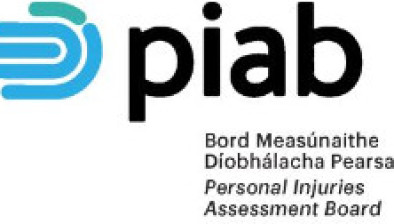Court of Appeal: More regard should be had to Book of Quantum

Andrew McKeown BL
The Court of Appeal has allowed a personal injuries appeal, and greatly reduced an award of damages for personal injuries. The court said that more regard should be had to the Book of Quantum.

About this case:
- Citation:[2020] IECA 242
- Judgment:
- Court:Court of Appeal
- Judge:Mr Justice Seamus Noonan
Background
In March 2017, Emma McKeown, a home carer, was driving on the Newry Road in Dundalk and was turning right into the entrance of a house when she was struck by an overtaking jeep, owned by Alan Crosby and Mary Vocella. It was “quite a significant impact” resulting in €3,000 worth of damage to her car, but the impact did not activate the airbags. She attended her GP that evening. She further attended an orthopaedic surgeon and her GP on multiple occasions.
The case was heard at first instance by Ms Justice Bronagh O’Hanlon in the High Court sitting at Dundalk Courthouse in December 2019, with the trial lasting for approximately half an hour. The court awarded Ms McKeown €70,000 for general damages, comprising €65,000 to date and €5,000 into the future, together with agreed special damages in the amount of €6,000.
Mr Crosby and Ms Vocella appealed against quantum on the ground that it was excessive. Ms McKeown cross appealed against the award of €5,000 for the future on the ground that it was too low.
Mr Justice Seamus Noonan, with whom Ms Justice Ann Power and Ms Justice Máire Whelan agreed, noted that the assessment of damages “is not amenable to scientific analysis”. Such assessment must take into account the kind of societal factors referred to by Chief Justice Tom O’Higgins in Sinnott v Quinnsworth [1984] ILRM 523, such as the “general level of incomes and to the things upon which the plaintiff might reasonably be expected to spend money”.
Mr Justice Noonan referred to the judgment of Ms Justice Susan Denham in M.N. v S.M [2005] 4 IR 461 where she said that awards given in previous cases benefit a court assessing general damages. There should be a “rational relationship” between awards of damages in personal injuries cases. There are three elements, being fairness to the plaintiff, fairness to the defendant and proportionality to the general scheme of damages awarded by a court, to be regarded. Damages should be proportionate to social conditions, “bearing in mind the common good”.
Ms Justice Mary Irvine observed in Nolan v Wirenski [2016] 1 IR 461 that it is “important that minor injuries attract appropriately modest damages, middling injuries moderate damages, and more severe injuries damages of a level which are clearly distinguishable in terms of quantum from those that fall into the other, lesser categories”.
Mr Justice Noonan observed that the Book of Quantum has had a surprisingly limited impact on the level of awards, “particularly when one considers the fact that courts are mandated to have regard to it by s.22 of the Civil Liability and Courts Act 2004”.
The judge said that judicial considerations of the Book are “relatively sparse”. The 2004 edition, “published during the height of the Celtic Tiger years, was perceived as going out of date very quickly”. Judges found, in Murphy v Galway Motor Club [2011] IEHC 135 and Walsh v Tesco [2017] IECA 64, that it was unsuitable for complex cases.
One of the cited limitations of the Book is that it cannot take account of how a particular injury affects a particular plaintiff, noted in McFadden v Weir [2005] IEHC 47. Mr Justice Noonan said that this was true up to a point “but such an approach runs the risk that similar plaintiffs with similar injuries may end up with substantially dissimilar compensation”. The judge asked whether a person who bears the consequence of an injury with fortitude should receive less compensation than one who does not, stating that such an approach would not be just or fair.
A court has no objective way of knowing what pain a plaintiff feels: “Different plaintiffs may have different pain tolerances, if such a thing truly exists” but due to this subjectivity, courts rely on the objective medical evidence in particular to arrive at fair compensation.
The court said that the Book aids that exercise, even if in many cases it may be of limited value.
The judge said that the “relatively recent and long overdue” updating of the Book in 2016 made it more relevant, that damages had in recent years become more static, and some commentators state that they have fallen.
However, there are many injuries not covered, such as scarring and psychiatric/psychological injury.
Mr Justice Noonan recalled how it was once common in Garda compensation cases to refer the court to past awards for similar injuries. The judge opined that the Book is seldom referred to by either advocates or judges. This was pertinent, as in the present case before the High Court, neither party referred to it, despite the injuries being of a kind that would appear to lend themselves readily to consideration in the context of the Book. Neither side made submissions as to damages, other than the defendant arguing that the matter should have been before the Circuit Court, and the trial judge “made no more than a fleeting reference to having had regard to it”. The judge stressed that this was not a criticism of anyone, but simply stating what appears to be the norm.
“It seems to me therefore that in cases where the Book of Quantum is clearly relevant, it would assist the court’s considerations to hear submissions from the parties about how it should be applied, or perhaps whether it should be applied at all,” he said.
The court found that it is important for trial judges to explain how particular figures for damages are arrived at, “since otherwise the appellate court is left in the dark about the trial judge’s approach and whether it ought to be regarded as correct or not”. If the trial judge considers that the Book is irrelevant in particular circumstances, “it would be very helpful for the appellate court to know why that is so”.
The judge cited the judgment of Ms Justice Irvine in Payne v Nugent [2015] IECA 268 that if modest injuries were to attract large damages, the effect would be to drive up the awards of those in receipt of the more significant middle ranking personal injuries claims such that there is a “concertina type effect at the top of the scale of personal injuries”.
Conclusion
The court found that the correct figure for pain and suffering to date was €25,000, with an allowance of €5,000 to take account of her neck and shoulder injuries. €5,000 was awarded for future pain and suffering, with the agreed special damages of €6,000. The court substituted an award of €41,000 for the award granted by the High Court.
The court therefore allowed the defendant’s appeal, and dismissed the cross-appeal.








